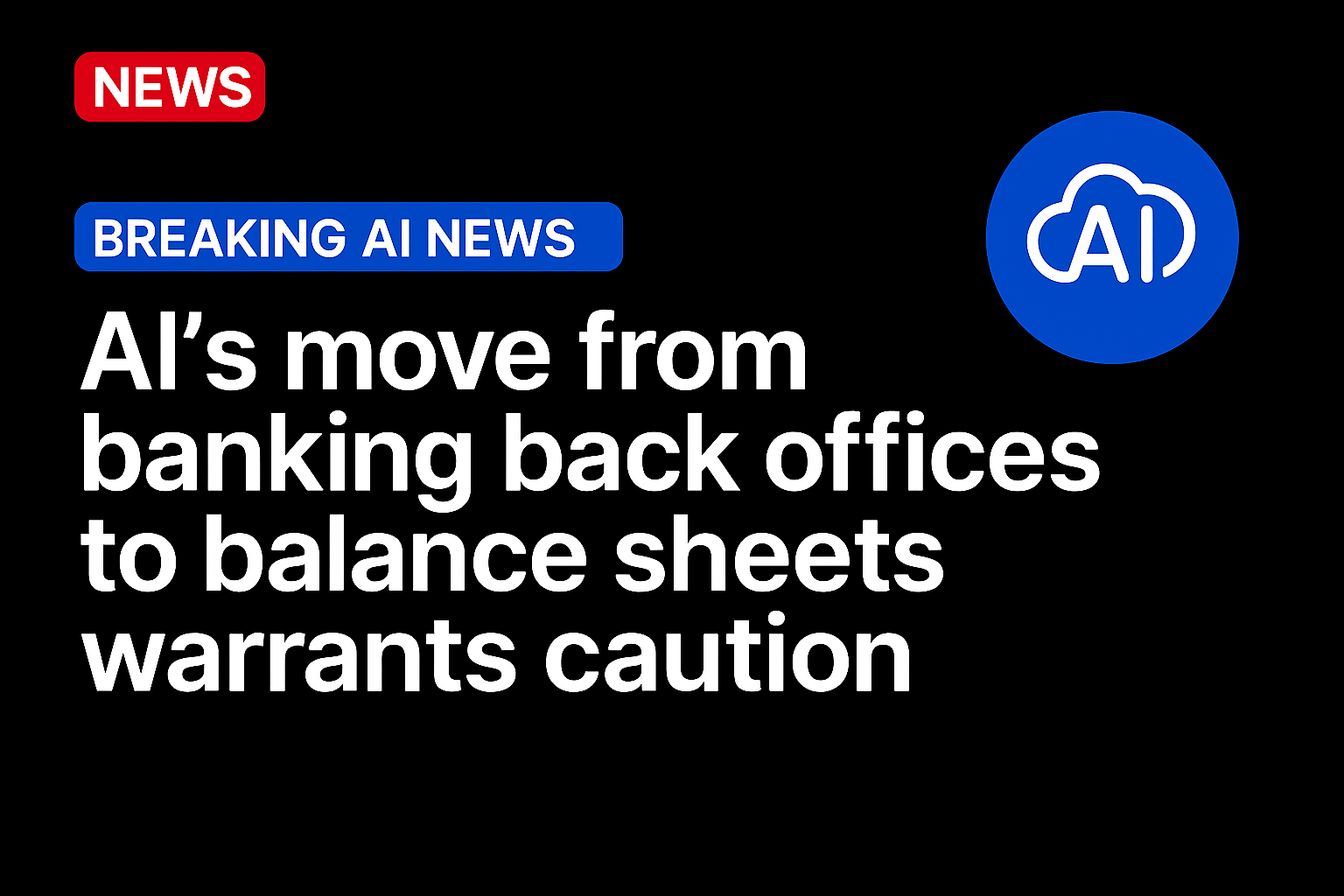Technology and data are changing the face of credit and in particular, the underwriting of that credit. AI is proving to be, and will continue to be, part of that transformation.
In the third-quarter earnings season, the largest U.S. banks spoke of stronger balance sheets, credit normalization and digital efficiency. Beneath that surface, and especially at some of the banks’ own partners and FinTechs backed by the financial institutions, artificial intelligence is beginning to redraw the lines between risk assessment and credit opportunity though executives seem careful not to over-promise.
As earnings season kicked off in earnest this month, among the larger banking players, Citigroup was among the most explicit. In its Q3 2025 earnings results, the bank reported that “investments in new products, digital assets and AI are driving innovation and improved capabilities across the franchise.” The company added that “~1 million automated code reviews completed by our Gen AI tools year-to-date saved approximately 100,000 hours per week across our developer population.”
That efficiency isn’t limited to technology operations. Citi CEO Jane Fraser told analysts that the same infrastructure underpins an effort where “we launched a firmwide effort to systematically embed AI in our processes end-to-end to drive further efficiencies, reduce risk and improve client experience.”
Earnings Show Investment, Not Overconfidence
JPMorgan Chase reported another solid quarter, with CFO Jeremy Barnum highlighting “slightly elevated charge-offs as a result of a couple of instances of apparent fraud in certain secured lending facilities.” The remarks pointed to tightening risk governance and a reminder that automation and data expansion, further down in what might be termed the “financial supply chain,” come with new oversight costs.
At Goldman Sachs, executives described AI as a lever for “productivity gains, process automation and client service enhancement,” part of its “One GS 3.0” strategy to streamline operations. Bank of America CEO Brian Moynihan, discussing Q3 results that beat expectations — $8.47 billion in profit on $28.09 billion in revenue — cited investments in digital engagement as drivers of efficiency.
From Customer Conversations to Credit Calculations
What’s clear from PYMNTS’ coverage is that AI’s reach inside banking itself now extends from the teller window to the balance sheet. Customer-facing tools are teaching institutions how to personalize services and, by extension, how to understand borrower behavior.
PYMNTS Intelligence has found that 72% of customers would stay or return if they received personalization via embedded conversational AI. When banks deploy digital assistants to answer questions or flag spending patterns, those same data signals can inform credit decisions. Another PYMNTS piece observed that AI-powered fraud prevention is reshaping the fight against financial crime, analyzing thousands of data points in milliseconds. That same analytical capability, redirected toward underwriting, allows banks and other lenders to assess repayment ability far more dynamically than before.
Alternative Data Expands the Credit Lens
At the heart of this transformation is alternative data — the widening set of non-traditional signals banks use to evaluate risk. As Concora Credit executive Kyle Becker told PYMNTS, “We use a wide variety of credit bureau data as well as alternative data in making our credit decisions. Alternative data is super useful because it allows you to maintain or reduce risk while also providing access to credit to more people.”
That includes everything from rent and utility payments to mobile-bill history and real-time transaction data. These signals, when processed by machine-learning models, can open credit access for borrowers overlooked by traditional bureau scoring. But they also require strict validation and bias monitoring.
Lessons From Tricolor: More Data, More Discipline
Recent headlines reinforce that caution is essential. The bankruptcy of Tricolor Motor, a lender focused on financing used-car purchases for thin-file borrowers via AI powered underwriting, has reverberated through Q3 earnings calls. JPMorgan CEO Jamie Dimon acknowledged that the bank’s exposure there was “not our finest moment.” Tricolor’s collapse illustrates the danger of fast-scaling credit portfolios built on complex data pipelines. Expanding the number of data points and models also multiplies the potential for model drift, data gaps and weak controls.
For banks experimenting with AI-driven underwriting, that lesson hits home. Efficiency and inclusion cannot outpace validation and governance. As PYMNTS noted recently, investment in AI must behave like capital expenditure: measurable returns, traceable risk and tight alignment to business outcomes.
Source: https://www.pymnts.com/




